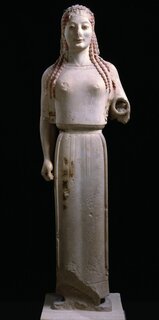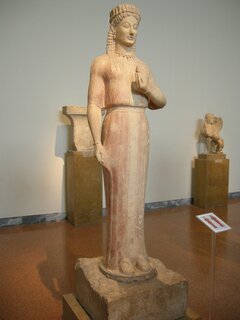
The Discobolus, was conceived in early 5th c. Athens by artist Myron, and is one of the most famed sculptures of the Classical Greek period. The subject of the Discobolus or “disc-thrower” is a young male posed in an athletic position whilst holding a sporting disc.
Sarah Bond introduces a rhetoric that states the freestanding statue is a ‘personification of equilibrium, strength, and athletic beauty.’ Although only Roman, white marble copies of Myron’s bronze survive today, we may understand that the original context of the Discobolus is indicative that similar sculptures were often awarded to prominent athletes as a marker of victory in sport. Evidence suggests that when the Romans effectively ended the ancient Greek epoch in 146 BC, a period of cultural assimilation occurred thus bringing a rise of art and philosophy clearly associated with Greek foundations. The naked form fell out of favor in the early Christian period and one can imagine that these beautiful bronze figures were moved out of the public eye as a new, more conservative civilization developed.




